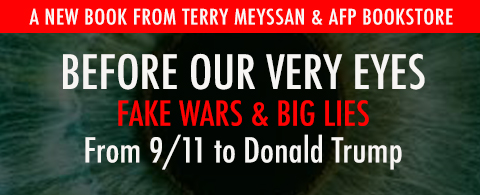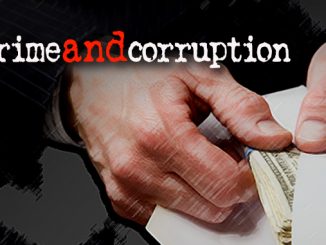
Does peace with the Taliban mean peace for Afghan people?
By S.T. Patrick
In 2007, Rep. Ron Paul (R-Texas) commented about withdrawing from Afghanistan, “We just marched in, and we can just march out.” Thirteen years later, President Donald Trump appears to have a deal in place to do just that, though critics are bemoaning the depth and timetable of the exit. Those who would turn the deal to leave Afghanistan into yet another referendum on Trump will also ask the unanswerable question about the future of Afghanistan, a country that has been called a “graveyard of empires” long enough that historians are unsure as to who coined the term.
In 2005 Secretary of Defense Donald Rumsfeld said, “Those who say we are losing this war are wrong. We are not.” The late Sen. Ted Kennedy (DMass.) pressed Rumsfeld to answer for the “gross errors and mistakes,” calling the war in Afghanistan an “intractable quagmire,” a term that harkened back to descriptions of the tragedy in Vietnam.
U.S. military and intelligence leaders had once threatened to turn the Soviet invasion of Afghanistan into “Russia’s Vietnam.” On Oct. 7, 2001, less than one month after 9/11, the new tragedy was once again America’s.
How serious is Trump’s new peace deal in Afghanistan? It only reduces troop strength from 13,000 to 8,600. Trump has also made it clear that any minor infraction or issue will serve as proper justification for the United States to nullify the deal altogether. The president of Afghanistan’s most powerful province, Kabul, has already refused to release 5,000 Taliban prisoners, one of the agreements within the deal. Then, there’s the prolonged 14-month withdrawal.
 Danny Sjursen, a retired U.S. Army officer and contributing editor at AntiWar.com, is rightly bothered by what the timetable signifies. “Truth be told, I . . . think the U.S. ought to have ditched the Afghan debacle long ago, and that a more rapid—immediate, even—comprehensive withdrawal is in order,” Sjursen wrote. “Never trust the hyper-interventionist establishment when it whines about the inefficacy and supposed danger of a sudden troop exodus from a failed war. That’s never anything more than a sleight-of-hand canard for indefinite occupation.”
Danny Sjursen, a retired U.S. Army officer and contributing editor at AntiWar.com, is rightly bothered by what the timetable signifies. “Truth be told, I . . . think the U.S. ought to have ditched the Afghan debacle long ago, and that a more rapid—immediate, even—comprehensive withdrawal is in order,” Sjursen wrote. “Never trust the hyper-interventionist establishment when it whines about the inefficacy and supposed danger of a sudden troop exodus from a failed war. That’s never anything more than a sleight-of-hand canard for indefinite occupation.”
The company line from the globalist Council on Foreign Relations has already warned of doom and gloom upon the U.S. exit via its favorite gloom-bearer, author and network analyst Max Boot. Ever hopeful that intervention and empire- building can continue, Boot writes that “there are still ways Washington can sustain the government in Kabul.” Boot proffers the tired stereotypes about peace agreements that Americans have heard as far back as the country’s leaders have engaged in them: that the “opposition” isn’t trustworthy, that the opposition will surely break the promises, and that any sort of action remotely resembling a surrender will forever damage the reputation of the United States. But what is the reputation of America around the world? The one critique heard throughout is about its interventionist policies.
There will be a vacuum after offensive forces leave, but no one is naïve enough to believe co vert military and intelligence operators will not be on the ground in Afghanistan for as long as anyone reading this article lives. Trump has been realistic about the effects of U.S. withdrawal. Echoing John Kennedy’s famous assessment of the Vietnamese people—“In the final analysis, it’s their war. They are the ones who have to win it or lose it”—Trump said the Taliban could possibly “overrun” the U.S.-backed government in Kabul after withdrawal ends. “Countries have to take care of themselves,” Trump told reporters. “You can only hold someone’s hand for so long. We can’t be there for the next 20 years. We’ve been there for 20 years and we’ve been protecting the country, but we can’t be there for the next [20]. Eventually, they’re going to have to protect themselves.”
The next president and those after will still deal with the effects of defeat in Afghanistan, a country that in 2021 will look much like it did when U.S. troops occupied it in 2001. When the last of the Soviet forces left Afghanistan demoralized in 1989, after a decade of useless bloodshed, they too dealt with the fact that when their war ended, the pendulum had settled back to the point where it had begun swinging. They, too, wondered, “What now?”
When author James Michener in 1955 visited Afghanistan to do research in preparation for writing his historical fiction novel Caravans, he was alerted that there were already Americans and Russians sprinkled throughout the country. Afghanistan was then a barren nation largely without roads. Yet the two Cold War superpowers were already playing geopolitical chess within the loosely held country, thinly being kept together by the nations that sought to control one Afghanistan rather than many disparate regional factions. Nothing above ground was of value; the gems were beneath the surface. There was natural gas, soil with prime fertility for growing opium, and a location ideal for empire-bolstering pipelines. In Caravans, an Afghan turns to the lead character, an American diplomat, and tells him that there would come a day when both Russia and the United States would invade Afghanistan. Both, he predicted wisely, would come to regret it.
S.T. Patrick holds degrees in both journalism and social studies education. He spent 10 years as an educator and now hosts the “Midnight Writer News Show.” His email is [email protected]. He is also an occasional contributor to TBR history magazine and the current managing editor of Deep Truth Journal (DTJ), a new conspiracy-focused publication available from the AFP Online Store.




